19 Months in Quarantine: Louise Dillery’s Tuberculosis Story
Photos from Louise Dillery’s private collection.
“I’m bored.” Louise spells out the word for emphasis as she laughs: “B–O–R–E–D.” The remark does not come across as a complaint, just a statement of fact.
Louise Dillery is 94 years old. She understands why she can’t have in-person visitors or go out and get her hair done. She doesn’t feel compelled to break the rules. She knows the stakes of COVID-19 and what it will take to get through this. This is, after all, not the first time she’s been forced to stay inside: nearly seven decades ago, Louise spent 19 months quarantined inside St. Paul’s Ancker Hospital.
Louise, circa 1949-1950, inside Ancker Hospital, St. Paul, MN.
At the start of 1949, Louise was a senior at the College of St. Catherine (now St. Catherine University), a private Catholic womens college in St. Paul, Minnesota. After years of tumult, Louise had every reason to feel buoyant and optimistic. She expected to graduate in the spring with a Bachelors degree in Education. Instead, an ‘x’ would appear next to her name on the graduation roster.
Before Louise could complete her student teaching requirement, the state demanded proof of good health. Sister Marie Philip, a nun who taught French at the college and had taken Louise under her wing, helped arrange a doctor visit. Louise was underweight—she had been since the war—but she felt healthy, so the doctor’s verdict was a devastating surprise: a chest x-ray showed she had bilateral active tuberculosis. Tuberculosis infections often caused patients to cough up blood or experience chest pain, fatigue and fever. But she never experienced any of those symptoms.
“The bottom fell out of my dreams,” she said of the diagnosis. She cried on the shoulder of her friend John.
Less than 24 hours later, Louise reported to Ancker Hospital with pajamas and a handful of personal items. “They didn’t fool around,” Louise said of the expeditious admission.
Tuberculosis peaked in Minnesota around 1918. Ancker, a large brick hospital in downtown St. Paul, had an entire wing for tuberculosis (TB) patients. The wing even had “top floor porches for maximum exposure to fresh air and sunshine.” By the time Louise arrived, though, the rate of active tuberculosis had fallen precipitously, and most of Ancker’s TB wards had been converted to care for other types of patients. At least two TB wards remained, though: one for men, another for women.
The ward Louise entered was a plain-walled room with eight beds: four beds along opposite walls. There were no divider curtains to provide privacy.
She felt warmly welcomed by the women. “You’ll feel bad and then you’ll be okay,” one told her. It did not take long to adapt to her new life; adapting was something Louise was used to.
Louise had no idea how long she would be there. Then—much like now—she hoped her isolation wouldn’t last long. But that room would be her home for the next 19 months.
Mary Ann (foreground), Louise (background)
Louise settled in to a bed next to a young woman named Mary Ann. Mary Ann occasionally donned thick-rimmed plastic glasses with a big Groucho Marx nose. Mary Ann had a remarkable gift for making people laugh, Louise recalled fondly.
Another woman, Helen, had been in the ward four years by the time Louise arrived and would remain in the ward well after Louise was discharged, too. Helen slept in the bed near a window that overlooked Ancker’s visitor entrance. Helen’s husband occasionally brought their young children and stood near the entrance so Helen could wave at them through the window. That’s as close as Helen could get to her children; it was too dangerous for them to visit in person. Helen never complained.
Then there was Millie, or “Wonderful Millie” as Louise always called her. Millie had graduated from college in Mississippi and moved to Minnesota after she realized that even with a degree, a black woman in the south would only find work as a maid. “Race didn’t matter,” Louise said, though having a mixed-race ward was unusual in those days. “We were all friends; we were like sisters. We all loved each other.” She laughed and corrected herself: “…well, some more than others, maybe.”
There was Frannie, who was married and had one son. Frannie would get a clean bill of health the same time Louise did.
And there was Ruth. “Ruth died, too,” Louise recalled.
It’s likely Mary Ann, Helen, Millie, Frannie, Ruth, and the others were equally eager to learn about their new ward-mate. Louise was a 23-year-old Parisienne who had only been in the United States two years. Louise spoke English with a British lilt since the English teacher at her lycée had been from London.
In March 1947 Louise sailed across the Atlantic with a single suitcase that held all her worldly possessions. From there, she flew to Minnesota to live with a sponsor family she had never before met. The family lived in a small apartment in the shadow of the Cathedral of St. Paul and for the better part of two years Louise slept on a couch in their living room. (A neighbor took pity on her living situation and connected her with someone at the College of St. Catherine. Louise was admitted as a Junior since she had passed the rigorous Baccalaureate exam in France. Tuition was waived exchange for work Louise did for the French Department.)
Louise had been an only child. Both her parents were dead. Her parents had immigrated to France from Poland in the inter-war years, and Louise had no connection to whatever extended family might have existed. She had dear friends from the lycée, but she was, effectively, on her own. Her plan had been to come to the United States for a few years, perfect her English, work and save up some money. She planned to return to her beloved Paris once the city had time to “get on its feet” and recover from the war.
But Louise’s diagnosis proved to be an effective full-leg sweep, knocking all of those plans to the ground.
Louise, circa 1949-1950, inside Ancker Hosptial, St. Paul, MN
For the first year inside Ancker Hospital, Louise was on strict bed rest. She was not even allowed to get up to use the bathroom. The women pretended to read or sleep whenever one of the others had to use a bed pan.
Months passed. Louise’s 24th birthday came and went. Through the ward’s windows they watched coal trains roll by and ambulances bring patients to the hospital. Occasionally ambulances got stuck on the far side of the tracks, forced to wait for a train to pass. The women would watch to see if the ambulance’s lights were still swirling by the time the slow train passed.
Doctors and nurses always wore full protective garb. Louise and the other women knew them only by their eyes.
Treatment was a barbaric process that involved a doctor inserting a long needle into the lower abdomen, then injecting air to compress the lungs. Forced compression helped the lungs heal, Louise had been told. To this day Louise has a seething hatred of needles because of those injections. Treatment occasionally caused permanent deformities that could impact posture; for ward-mate Frannie, treatment did just that. Yet despite the excruciating pain and risks of damage, the women had no choice but to trust that treatment would eventually work.
Even after she was released, she went in for occasional treatments. They stopped only after she became pregnant. Doctors told her babies naturally compress the lungs.
Throughout the treatments Louise never asked why me?
“Why not me?” is her pat response. “Sad things happen to everyone.”
It was a lesson she learned all too well during the war.
______
Ten years earlier, Louise’s mother died from tuberculosis; Louise is certain that is how she was exposed. It isn’t uncommon for the disease to remain inactive in lungs for years before morphing into the active form of the disease.
In Louise’s mother’s time, active tuberculosis was a death sentence. Louise’s mother received care from a “seagull”—a sister from Saint Vincent de Paul—at their family’s small, dark apartment on Île Saint-Louis. The nuns earned the seagull nickname because of their white, wide-winged cornettes. As a child, Louise had always found humor in the way the nuns clothes pinned the tips of the cornettes together when they rode the Metro. They did that so they wouldn’t poke someone’s eye out.
One day, when Louise was just 13 years old, she returned from school and discovered her mother had been taken away. She was not permitted to visit her mother in the hospital. She was robbed of the opportunity to say goodbye. Weeks later, Louise and her father learned of her death via telegram.
Though they were non-observant Jews, her mother had a traditional Jewish burial. Two-and-a half months after she was buried, the Germans invaded Poland. Nine months after that, the Germans invaded France.
For a couple of years Louise and her father got by under Nazi rule. In many ways, life didn’t change much for the young teen. She continued going to school. She and her father continued living in their apartment on Île Saint-Louis. The most visible change for the teen was the Star of David she was obligated to sew onto her and her father’s clothes. The humiliation was searing, and as she walked to school she carried her books on her left side in an attempt to cover it up.
Before the war, Louise’s father owned a locksmith business, but during the occupation he labored in a box spring factory. It was the only job he could find. He worked until stomach ulcers left him unable to get out of bed. On the day the two were scheduled to pick up their ration coupons, her father was too ill to leave the apartment so Louise retrieved both sets. Two French policemen watched her, then followed her home. They entered their apartment behind her, arrested her father, and took him away. She never saw him again. After the war she learned he died inside a train car on the way to Auschwitz.
Louise was 16 years old, and alone. She credits survival to the kindness of others: the head mistress of the lycée who offered a scholarship so she could continue to attend even though Jews weren’t supposed to attend school beyond grade school; the priest who secretly gave her money so she could pay the rent; the neighbor who alerted her of upcoming raids so she wouldn’t be home; the parents of a school friend who made sure she had at least one good meal a week. Louise calls those people “angels in human form.”
At Ancker she encountered angels, too.
A librarian from the St. Paul Public Library hand-selected books and brought them to the ward. True or not, the librarian had been told tuberculosis bacteria couldn’t live on paper. Louise was an avid reader; books allowed her to escape the room to other places and times. One book she fondly recalled devouring was The Brothers Karamavoz by Dostoevsky. “It was terrific!” she exclaimed. She was proud to state she read the English translation of the book, not the French translation.
Another angel was a local man who sold newspapers on the corner of 7th and Wabasha. When big-name stars came through town, he occasionally convinced them to come to the hospital to sing or sign autographs. Louise and her ward-mates—the male tuberculosis patients, too—would be loaded into six-seater carts, then wheeled to watch the performers. Louise got to meet the jazz pianist George Shearing that way.
The newspaper seller also raised money from local businesses to buy a television set for the women. (Louise presumed he raised money for a television for the men’s ward, too, though didn’t know for certain). The television had a small, round screen, but still, it was a luxury. In 1950, fewer than 20 percent of American homes had a television. Once it arrived, the women noticed a sharp uptick in visitors. Sometimes visitors would offer a quick hello, then sit and watch Sid Ceasar, Milton Berle, or the puppet show Kukla, Fran and Ollie.
Louise had nothing to offer in exchange for any of these acts of kindness. One of the rules she has lived by is “always be grateful.”
Ancker Hospital, circa 1949-1950. Louise is in the center, looking at Mary Ann
Many days, laughter was the thing that got the women through. “You learn not to take yourself too seriously when you don’t have any privacy,” Louise said.
The women looked forward to seeing Rosa, a chubby nurse’s aide with bright eyes. Rosa told the women a new, dirty joke every day. Mary Ann would occasionally don the plastic Groucho Max nose to lighten the mood. The women would laugh after the janitor cleaned their room—the man had horrendous body odor, she explained. They kept busy knitting or crocheting, fixing their hair and applying make-up. They made their own fun.
The women didn’t have anything to prove to each other; they loved each other with all their faults and imperfections. They rooted for each other’s success. “Friends are real blessings,” Louise said, “it’s not that complicated.”
And though there were lots of laughs, “it didn’t mean we didn’t cry,” Louise said.
Occasionally one of the women would be wheeled to a room at the end of the corridor. Everyone knew what that meant: she would never be coming back. When one of them was taken, a pall would come over the room. A week of silence would ensue.
One morning Louise awoke to discover Mary Ann—the woman who would don the plastic Groucho Marx nose—was gone. Mary Ann had been taken to the room at the end of the corridor.
“Such gloom,” Louise said slowly.
Louise with John
Helen’s mother showed up every day during visiting hours. Helen’s mother didn’t drive; she traveled by bus or street car. “Some people live a heroic life quietly,” Louise said of the time and effort it took Helen’s mother to visit every day, year after year after year.
Husbands, family members, and friends would visit. Those who visited frequently got to know all other women in the ward and would offer greetings to everyone. Visitors did not have to wear masks. “It was absurd,” Louise said of the rule.
Louise did not have any family to visit; still, the dark-haired beauty had visitors.
Jim, a handsome Irishman who was the older brother of one of her classmates at College of St. Catherine, visited often. “Oooh, did I have a crush on Jim,” she said.
John, a WWII veteran she met at her sponsor family’s church, would visit, too. John was always jolly, and the women in the ward were certain Louise would marry him someday. To celebrate one Bastille Day John found a bakery that sold baguettes. “Real baguettes—those weren’t easy to find in those days.” When John entered the ward he waved the baguette around and sang La Marseillaise.
Jim and John would visit at different times, of course.
“Life is interesting, isn’t it?” Louise said wistfully.
Ancker Hospital, circa 1949-1950. Louise is on the right, blowing the horn
Tests eventually showed Louise no longer had active tuberculosis. She was granted freedom to use the toilet, make her bed, take a shower, and eventually, venture outside. After a year of bedrest, Louise was so weak those were Herculean tasks. During one of her first solo trips to the bathroom Louise’s legs were so weak she collapsed.
Frannie received a clean bill of health around the same time. When Louise and Frannie were strong enough, the two walked to a local department store. They had been wearing pajamas for so long they pined to wear new, regular clothes. They wanted something bright and colorful to counter the months of staring at plain walls. Louise and Frannie purchased matching skirts. “The ugliest, most garish skirts you’ve ever seen!” Louise recalled with a laugh. “We must have looked like clowns. You could have seen us from a mile away!” The skirts were bursting with bright color; color was the thing they needed the most.
Louise kept in touch with Frannie for years after they were discharged.
Louise kept in touch with Wonderful Millie for a few years, too. Louise even attended Millie’s wedding, which took place at Saint Peter Claver, a church that has served St. Paul’s African-American Catholic community since the 1890s. Louise was proud to attend, and recalls being one of only a few white people in attendance.
Louise was discharged in September 1950. Sister Marie Philip at the College of St. Catherine helped once again by giving Louise a place to live. It was tiny room in an administrative building, but Louise was delighted and filled with gratitude. It was the first time in more than four years she had privacy and a space of her own. “She was an angel to me,” Louise said of Sister Marie Philip.
John, the jolly man who sang La Marseillaise, won Louise over with his wit and kindness. Thirteen months after she was discharged, the two married. They had five children: three boys and two girls. John and Louise had fourteen years together before John died during heart valve surgery.
“It’s not the number of years,” she stated matter-of-factly, “it’s the quality of the time.”
After John died, Louise returned to school. In 1969—twenty years after she originally planned to graduate—she earned her Bachelors degree from the College of St. Catherine. Louise went on to teach French at South St. Paul High School and Century College. She loved teaching, and taught into her mid 70s.
Louise, circa 1949-1950, inside Ancker Hosptial, St. Paul, MN
It’s been 70 years since Louise was released from quarantine. She lives in a townhome in Oakdale, Minnesota with her son Paul. Paul buys the groceries, gets the mail, and ensures there is no need for Louise to venture out. She misses Sunday dinners with extended family, getting together with friends, and having her hair done. But she holds tight to a familiar sense of solidarity that will allow us to get through this. Armed with gratitude, an undiminished sense of humor, and friends she has known for decades, Louise knows the ability to adapt is key to our collective success.
“The human spirit is strong; it has to be,” she said. “We can adapt. That’s what we have control over.”
Louise celebrating her 91st birthday, Meritage Restaurant, St. Paul, MN
- MN Tuberculosis statistics: Wilson, Leonard G. “THE RISE AND FALL OF TUBERCULOSIS IN MINNESOTA: THE ROLE OF INFECTION.” Bulletin of the History of Medicine, vol. 66, no. 1, 1992, pp. 16–52. JSTOR, www.jstor.org/stable/44452078. Accessed 28 Apr. 2020.
- Ancker Hospital history: http://www.mnsans.com/ramsey-sanatorium.html
- Number of television sets, 1950: https://www.encyclopedia.com/history/culture-magazines/1950s-tv-and-radio
- Sister Marie Philip: https://www.facebook.com/csjstpaul/posts/sister-marie-philip-haley-1899-1996sister-marie-philip-was-born-geraldine-on-dec/1238437813016521/
- St. Peter Claver: http://www.spcchurch.org/our-history/
- Interviews with Louise Dillery conducted via phone April 23 and 24, 2020.

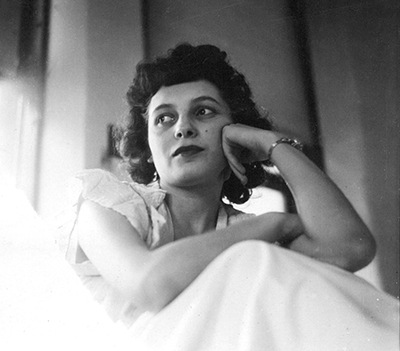

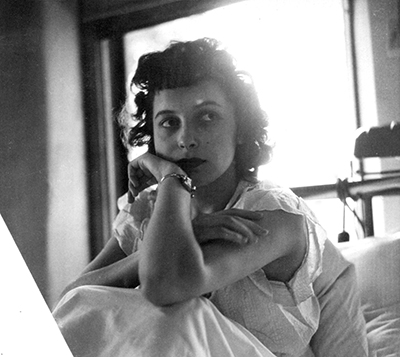

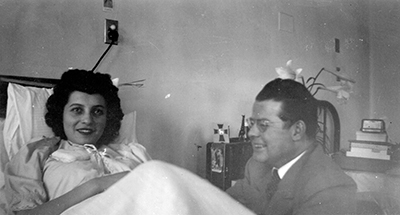

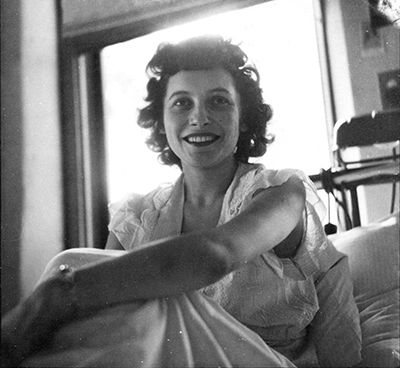
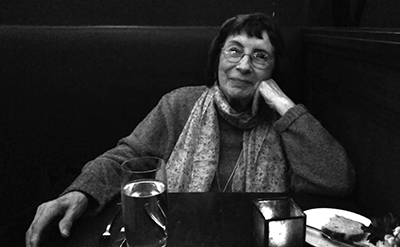
Barbara Koster
May 23, 2020 at 8:03 pmThank you so much, Carolyn. Louise is a beautiful example of great patience; one that we must all share during this very strange time. We’re blessed to have so much more than we realize…
Barb Koster
Shelagh Mullen
May 22, 2020 at 6:34 pmBeautiful story Carolyn! My older brother spent time at Anker with polio. He was very young and certainly didn’t have such fond memories. Cheers to you and Louise!
Karen Cochrane
May 22, 2020 at 6:57 amAloha!
Thank you for writing Marcel’s Letters. I just finished reading it; it is a very fine story, beautifully written. This story of Louise’s just adds depth. I could completely relate to becoming obsessed and going on a search for answers. I became aware of your book through the Blas Bleu book catalog. It had been on my bookshelf waiting to be read for over a year and now I have to tell every reader I know about this book you have written. The story has taken up residence in my heart. Mahalo.
Margie Grilley
May 22, 2020 at 2:46 amCarolyn, what a warmly-written, bittersweet and inspiring story. I love that all the women got along and made the best of things. I would hope the same could happen today…
Thank you for sharing Louise’s story.
Rubin Latz
May 21, 2020 at 5:20 pmMerci beaucoup, Carolyn et Louise!!
Blessed.
Sending socially-distanced hugs & love.
Sally c Hyland
May 21, 2020 at 4:30 pmOh I love that story about Louise. What a wonderful gal,she is!
More stories,please!
Woofie
Susan Mertesdorf
May 21, 2020 at 4:06 pmThank you and Louise for an inspiring story and to prove, people can get through anything, if they just settle in for the ride.
sage holben
May 21, 2020 at 12:05 pmThank you… for your empathy, for your insight, for your understanding the ‘human-ness’ in all of us , and especially for sharing through your writing, the life of an exceptional woman. It’s an inspiring story we need in this time.
Natalia Krawetz
May 21, 2020 at 3:36 amThis is the perfect piece for the time we are in. We’ve been dealing with COVID long enough to get beyond scared and anxious (although some of that remains) and refocus on boredom. and an eagerness to return to normal. The only things that will get us through are patience, using common sense to stay safe, and the inspiration provided from the example of others. Thank you for such inspiration.
Nancy Hall
May 21, 2020 at 2:28 amGreat read. Thanks for sharing. Louise is such a role model.
Rachel M. Anderson
May 21, 2020 at 1:00 amCarolyn, Thank you for sharing! Nice job telling Louise’s story! Maybe there’s another book in your future. The title could be something like Surviving a Pandemic – Then and Now.
Judy Gross
May 21, 2020 at 12:47 amLouise is certainly an inspiration.
Mary Buffington
May 21, 2020 at 12:45 amWhat a wonderful and poignant story, especially so because I attended the College at St. Catherine’s from 1958 – 1960. I then transferred to the University of Iowa and received my Education degree. When growing up in Le Mars, Iowa, I also knew a mother of two who was in the tuberculosis ward in Oakdale in Iowa City. My mother often cared for her two children – unfortunately, “Verna” was never able to return home to her family. The story of Louise brought tears to my eyes. So many tragedies and so few complaints. Thank you for writing this story, Carolyn. We all need to appreciate the hand that has been dealt to us, when so many others have suffered so much more. I will share this with both of my sisters as they too attended St. Catherine’s and a grand niece is now on the faculty at St. Catherine’s University.
Mary Kay O’Loughlin
May 21, 2020 at 12:38 amThis great lady survived a lot, Carolyn, and thanks to your sharing her story, she shows us that attitude is everything.
Growing up in St. Paul, I remember Ancker Hospital very well, though I was never a patient.
A graduate of St. Catherine University, I remember Sister Marie Phillipe, and her acts of kindness toward Louise are not a surprise to me.
Louise’s story is wonderful, and it deserves a gifted writer to tell it.
Judith Peters
May 20, 2020 at 11:44 pmWhat an interesting story. …nicely written. Louise must be a marvelous person with a great, positive attitude – what a great person to have as one’s friend. It is much nicer (and fun) to be positive about situations instead of negative. Thank you for sharing her story.
Karen
May 20, 2020 at 11:40 pmWhat a wonderful lady!